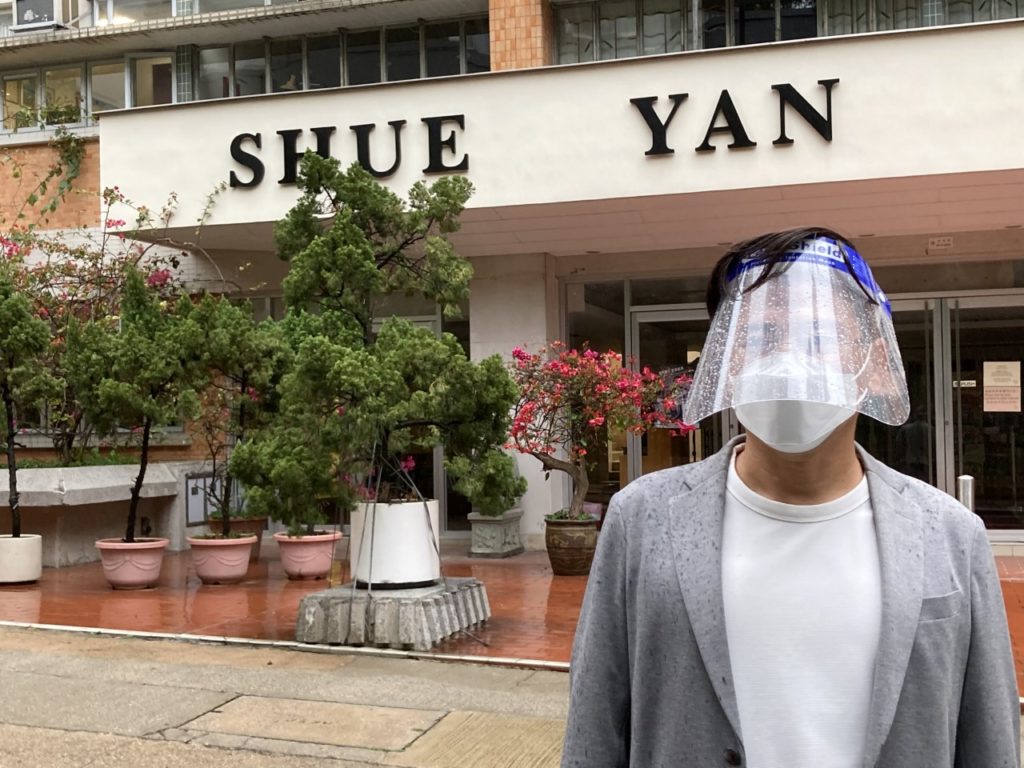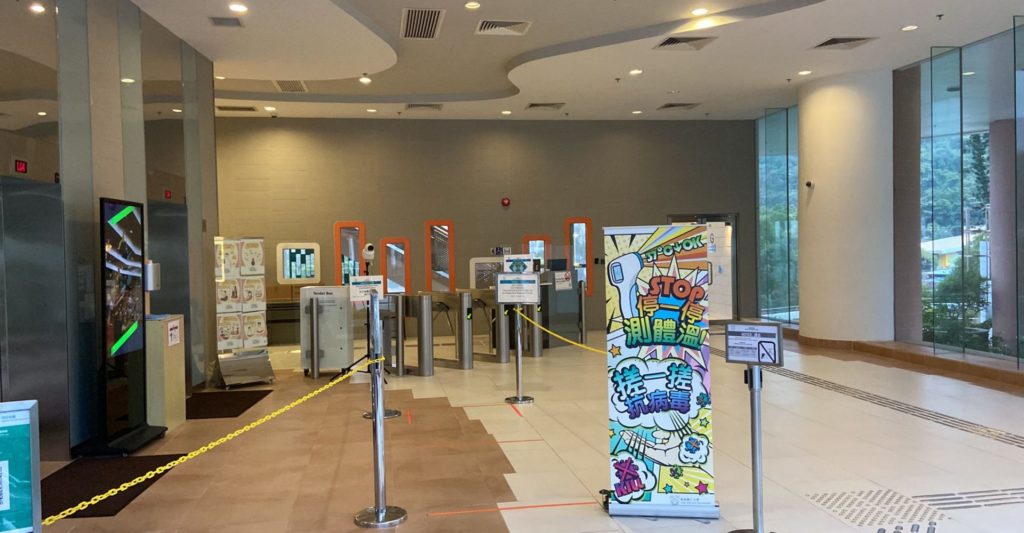

It has been more than two years since the first outbreak and the University had once closed for 17 days. In face of the fifth wave of the new epidemic, Professor CHEUNG said the management of the University made an important and appropriate decision by allowing the student residents to choose whether to leave or stay. “We took into account that our students on campus are from different walks of life and their living environment may not be suitable for isolation. We are committed to taking care of our students, so when we were notified of the confirmed cases, we gradually developed a ‘Four-Phase Plan’ to set up isolation floors on campus.”
In the first phase, the first isolation zone of HKSYU is located on the 7th floor of the Research Complex, with 30 en-suite rooms (equipped with individual toilets and ventilation systems) which are better for isolation in terms of environment and facilities. The second phase is to take back the 21st and 22nd floors of the Residential & Amenities Complex for isolation. There are 32 en-suite rooms on those two floors and the University has installed disinfection and sterilization UV lights to the ventilation openings outside the rooms, and added bleach tablets to the water tanks of the toilets to prevent the virus transmission through sewage. In the third phase, 84 rooms on three floors of the Research Complex will be set aside for isolation. In the fourth phase, the isolation floor will be reversed to be used as a refuge floor for non-infected people, while infected residents will be isolated in their original rooms.
Pointing out that the University can provide a maximum of 448 rooms for isolation, Professor CHEUNG said up to now, activating the first phase has been sufficient to meet the actual need despite the seriousness of the fifth wave. “At the peak of the epidemic in early March, there were at most 15 members of the University confirmed in one day, and the maximum number of infected people in the isolation zone reached 24. We have also arranged for dedicated wardens to help take care of the needs of the students in the isolation zone. After all, the University is not a medical facility. With the shortage of community isolation facilities and healthcare services, the only way to provide appropriate isolation measures in a short period of time is to continuously improve the supporting facilities, and provide support to students according to government guidelines within our capacity.”
When asked about the biggest challenge faced by the University since the outbreak, Professor CHEUNG said that he had arranged for his colleagues to line up in different districts every morning in early March to collect the deep throat saliva specimen collection packs. “The rapid antigen test results were not yet recognized by the Government at that time, but as soon as there was a preliminarily confirmed case on campus, we would distribute the rapid antigen test kits to all students on that floor so as to identify the infected cases earlier and prevent the spread of the virus. It was fortunate that during the most stressful period of anti-epidemic supply shortages, I was able to contact a supplier of anti-epidemic materials to order a batch of rapid antigen test kits for the students and teachers.” He added that the University also distributed medical thermometers and basic antiviral supplies to students in the isolated zone so that they could keep an eye on their health conditions.


New platform for teachers and students to check epidemic information
We successfully managed zero infection on campus for several days in the past two weeks, with no more infected case in the isolation zone of the University. Professor CHEUNG believes that after the epidemic in the past few months, students and faculty members have become more aware of epidemic prevention and are willing to cooperate with the University. The official website of the University has also set up a webpage “HKSYU Updates on Anti-Virus Measures” to publish information on epidemic prevention within the University and remind students, faculty and staff to stay vigilant. “To prevent the epidemic, students and faculty need to work together in the long run. We encourage students to get vaccinated as soon as possible to reduce the risk of infection and transmission, and advise students to wear masks and keep appropriate social distance even if they want to go outside to relax.”
As the epidemic is slowing down, HKSYU operations have been gradually resumed, for example, the library has reopened on March 28. The different departments will also resume the “AB team” practice from April 4 and require all faculty and staff to undergo a “daily check-up” to ensure their physical condition before returning to school. For the criteria of resuming face-to-face teaching, Professor CHEUNG said it depends on the number of confirmed cases in Hong Kong, the latest epidemic development, the policies of the Government and other institutions, and the expectations of our teachers and students. “The second semester of the 2021/22 academic year is drawing to a close, and it has been announced earlier that the final exams will be replaced by other continuous assessment tasks or be conducted online. It is expected that face-to-face teaching and learning will be resumed in the coming academic year when the epidemic subsides.”